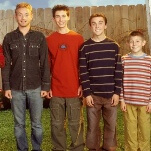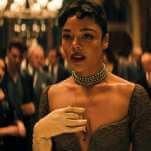Michelle Stacey: The Fasting Girl: A True Victorian Medical Mystery

One or two hundred years from now, some writer will produce a study of the mania that overcame stock traders in the 1990s, when ignorance of the true capabilities of Internet technology led to wild speculation and financial disaster. Readers of the future may well chuckle at this generation's naïveté; in the meantime, readers of the present can take comfort in reading about the follies of otherwise-intelligent people from centuries ago. Tom Standage's short, unpretentious The Turk and Michelle Stacey's more ponderous The Fasting Girl both examine how past men of science dealt with unexplained phenomena. The Turk concerns the rage for automata that seized Europe in the mid- to late 18th century, as well as Wolfgang von Kempelen's efforts to construct a wind-up robot capable of playing a decent game of chess. The Hungarian scientist came up with a device that the public dubbed "The Turk" (for its vaguely Arabic decoration); the machine lasted nearly a century, beat masters on two continents, and confounded journalists and fellow gearheads. The machine was more magic trick than engineering feat, and in the tradition of the great showmen, Standage holds off on revealing how the trick was done until The Turk's penultimate chapter. Instead, he focuses on investigators' attempts to figure out Kempelen's secret, and how mechanics' growing knowledge over the passing decades increased the protests that the chess-player was a straight-up con. (Still, none of the protesters, not even then-fledgling writer Edgar Allan Poe, ever understood exactly how it worked.) Along the way, the very possibility that such a device could exist inspired the creation of automated factories and the earliest computers. After detailing The Turk's weird biography and revealing the gimmick, Standage does ultimately indulge in a little cultural analysis, as he evaluates humanity's tenuous relationship with "thinking" machines, all the way up to the testy rivalry of chess champion Garry Kasparov and IBM's Deep Blue. Stacey's The Fasting Girl, on the other hand, consists almost entirely of analysis. Centering on the case of Brooklyn oddity Mollie Fancher—who suffered a streetcar accident in 1865, then went into a 12-year trance during which her relatives claimed she consumed virtually no food—the book introduces the main character, then promptly pushes her aside to explore the temper of the times. Stacey reports on the tradition of spiritual fasts and the trend toward undernourished hysterics in the 19th century; she also dwells on the history and personality of Fancher's doubters and defenders in the medical community. Stacey often overexplains, and her back-and-forth chronology spins more threads than she can effectively tie up, but The Fasting Girl is still riveting. The book is punched up by the central thesis that Fancher's case encapsulates the struggle between religious faith and the scientific method in the era of Darwinism, when learned men often disagreed on even the most basic of medical diagnoses for philosophical reasons. Like Standage, Stacey saves her explanation of Fancher's ability to "feast on air" until the book's end, which lets readers feel the uncertainty of Fancher's contemporaries (and The Turk's), as they tried to decide what they really understood.







































